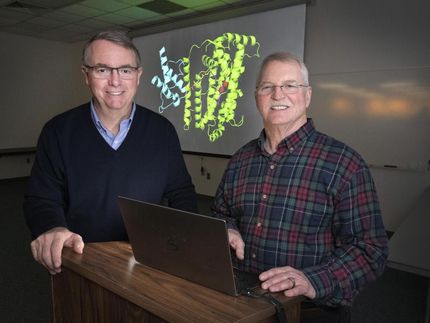Catalyst mystery unlocked
Different keys are not supposed to fit the same lock, but in biological systems multiple versions of a catalyst all make a reaction go, according to a new study that explains the phenomenon. Scheduled for PNAS Early Edition, a study challenges entrenched ideas about the workings of catalysts. The study also suggests a method for designing new catalysts.
"The Holy Grail of enzyme catalysis and the ultimate manifestation of understanding of this process is the ability to design enzymes," said senior author Arieh Warshel, professor of chemistry at USC College. He listed drug production, environmental chemistry and bioremediation as areas that could be revolutionized by custom-designed enzymes. In the PNAS study, Warshel described a computational model that both explains a key aspect of catalyst function and suggests a design strategy.
Since the early days of catalyst chemistry, scientists had championed the "lock and key" model, which held that a catalyst worked by exquisitely surrounding and matching the reacting system (the substrate). Warshel's group has published several papers in support of an alternate theory based on electrical attraction. According to the group, a perfect physical fit between catalyst and substrate is not necessary.
"What really fits is the electrostatic interaction between the enzyme active site to the substrate charges at the so-called transition state, where the bonds are halfway to being broken," Warshel said. If Warshel is correct, catalyst and substrate would be less like lock and key, and more like two magnets: As long the opposite poles could get close to each other, they would bind. Warshel's model reproduced new experimental data showing that a natural enzyme and its engineered, structurally different counterpart both have the same catalytic power, despite being very different from each other.
The engineered enzyme, made by co-author Donald Hilvert of ETH in Zurich, Switzerland, displays less distinct folding than the natural enzyme. It also changes shape very rapidly. Warshel's model shows that the engineered enzyme takes the shape of many keys, with all fitting electrostatically in the same lock. This should offer a new option for enzyme design.
Most read news
Organizations
Other news from the department science

Get the chemical industry in your inbox
By submitting this form you agree that LUMITOS AG will send you the newsletter(s) selected above by email. Your data will not be passed on to third parties. Your data will be stored and processed in accordance with our data protection regulations. LUMITOS may contact you by email for the purpose of advertising or market and opinion surveys. You can revoke your consent at any time without giving reasons to LUMITOS AG, Ernst-Augustin-Str. 2, 12489 Berlin, Germany or by e-mail at revoke@lumitos.com with effect for the future. In addition, each email contains a link to unsubscribe from the corresponding newsletter.


























































